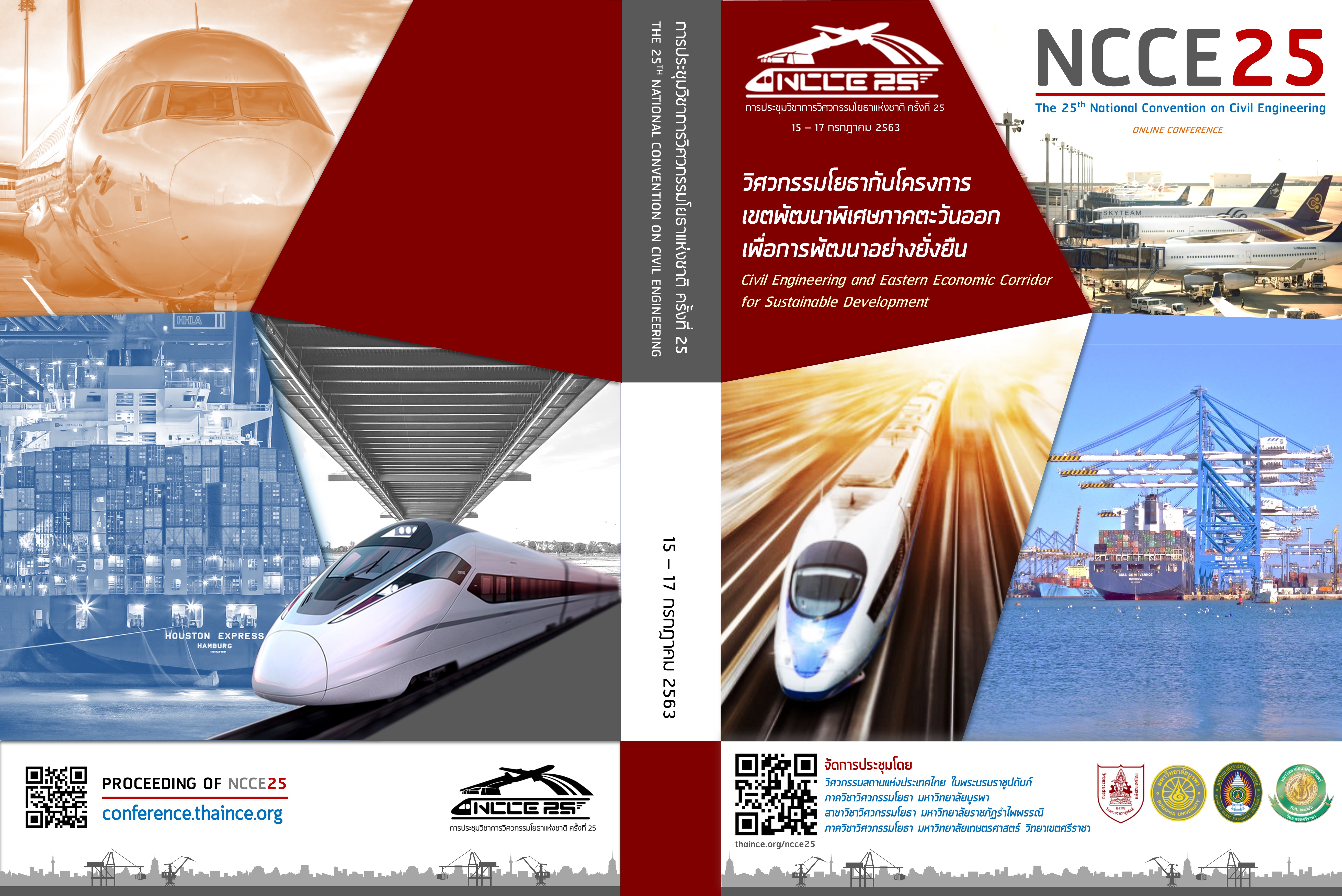Mechanical properties of geopolymer concrete containing fine recycled granite aggregates.
Keywords:
geopolymer, concrete, granite, recycled aggregateAbstract
The aim of this study is to investigate the mechanical properties of geopolymer concrete containing fine recycled aggregates. Granite industry waste was used to replace natural sand at dosage levels of 0%, 25%, 50%, and 100% by mass of fine aggregate. The results were compared with the control concrete made with fine natural aggregates. The results showed that the use of recycled granite aggregates increased the 7-day compressive strength of concrete. The flexural strength increased with the increase in granite aggregate content. In addition, geopolymer concrete containing 50% granite aggregate showed the highest toughness value.
Downloads
References
[2] Nuaklong, P., Sata, V., & Chindaprasirt, P. (2016). Influence of recycled aggregate on fly ash geopolymer concrete properties. Journal of Cleaner Production, 112, 23002307.
[3] Guo, X., Shi, H., & Dick, W. A. (2010). Compressive strength and microstructural characteristics of class C fly ash geopolymer. Cement and Concrete Composites, 32(2), 142147.
[4] ASTM, International. (2005). Standard Specification for Coal Fly Ash and Raw or Calcined Natural Pozzolan for Use in Concrete (ASTM C618).
[5] Ghannam, S., Najm, H., & Vasconez, R. (2016). Experimental study of concrete made with granite and iron powders as partial replacement of sand. Sustainable Materials and Technologies, 9, 1-9.
[6] Jain, A., Gupta, R., & Chaudhary, S. (2019). Performance of self- compacting concrete comprising granite cutting waste as fine aggregate. Construction and Building Materials, 221, 539-552.
[7] Singh, S., Khan, S., Khandelwal, R., Chugh, A., & Nagar, R. (2016). Performance of sustainable concrete containing granite cutting waste. Journal of Cleaner Production, 119, 86-98.
[8] Vijayalakshmi, M., & Sekar, A. S. S. (2013). Strength and durability properties of concrete made with granite industry waste. Construction and Building Materials, 46, 1-7.
[9] อำพล วงศ์ษา. (2556). การใช้วัสดุเศษวัสดุเป็นส่วนผสมในคอนกรีต พรุน (วิทยานิพนธ์ปริญญาวิศวกรรมศาสตรมหาบัณฑิต). สาขาวิชาวิศวกรรมโยธา บัณฑิตวิทยาลัย มหาวิทยาลัยขอนแก่น ประเทศไทย.
[10] Zhuang, X. Y., Chen, L., Komarneni, S., Zhou, C. H., Tong, D. S., Yang, H. M., ... & Wang, H. (2016). Fly ash-based geopolymer: clean production, properties and applications. Journal of Cleaner Production, 125, 253-267.
[11] ASTM, International. (2003). Standard Specification for Concrete Aggregates (ASTM C33).
[12] ASTM, International. (2005). Standard Test Method for Slump Flow of Self-Consolidating Concrete (ASTM C1611).
[13] ASTM, International. (2018). Standard Test Method for Compressive Strength of Cylindrical Concrete Specimens (ASTM C39).
[14] ASTM, International. (2002). Standard Test Method for Flexural Strength of Concrete (Using Simple Beam with Third-Point Loading) (ASTM C78).
Downloads
Published
How to Cite
Issue
Section
License
บทความทั้งหมดที่ได้รับการคัดเลือกให้นำเสนอผลงานในการประชุมวิชาการวิศวกรรมโยธาแห่งชาติ ครั้งที่ 25 นี้ เป็นลิขสิทธิ์ของ วิศวกรรมสถานแห่งประเทศไทย ในพระบรมราชูปถัมภ์



